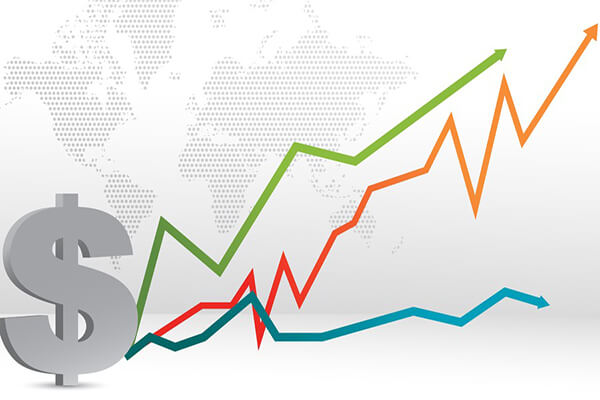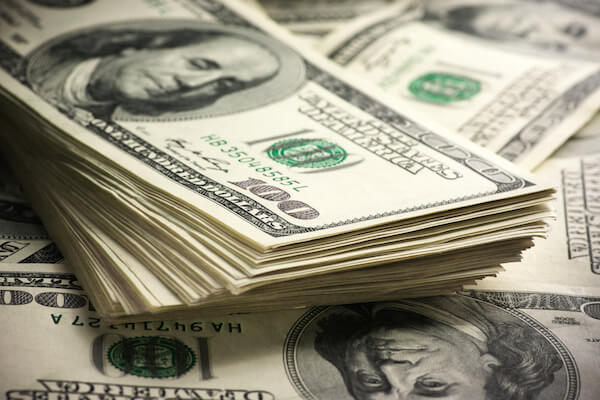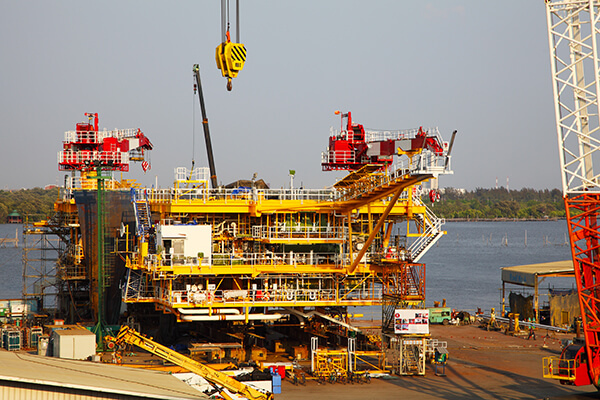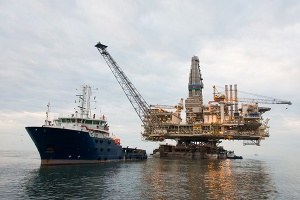Tag Archive for: OPEC
Oil advanced as Iraq said it pledged to cooperate with OPEC to reach an agreement this week that’s acceptable to all members.
Futures rose as much as 2.7 percent in New York after earlier declining. Iraq’s Oil Minister Jabbar al-Luaibi said Monday he’s “optimistic” a deal will be reached at OPEC’s summit in Vienna on Wednesday.
Saudi Arabia previously said that the producer group doesn’t necessarily need to curb oil output, after pulling out of a scheduled meeting with non-members including Russia.
“The market is going to be like a yo-yo reacting to headlines surrounding the Nov. 30 Vienna meeting,” Bart Melek, the head of global commodity strategy at TD Securities in Toronto, said by telephone. Statements out of Iraq lead to the assumption that it is likely a deal to cut output will be reached, he says.
The Organization of Petroleum Exporting Countries is heading into the last stretch of negotiations before its November 30 meeting to adopt a supply deal that was first floated in September. Oil prices whipsawed last week as various OPEC members and Russia tried to position themselves ahead of a final accord to reduce production. Ministers from Algeria and Venezuela headed to Moscow on Monday to get the biggest non-OPEC producer on board.
West Texas Intermediate for January delivery rose $1.02 to $47.08 a barrel at 10:08 a.m. on the New York Mercantile Exchange. Total volume traded Monday was 31 percent higher than the 100-day average.
Brent for January settlement advanced $1.01, or 2.1 percent, to $48.25 a barrel on the London-based ICE Futures Europe exchange. The global benchmark traded at a $1.17 premium to WTI.
Saudi Stance
While Saudi Arabia has pushed to reverse OPEC’s pump-at-will policy, Energy Minister Khalid Al-Falih said Sunday the oil market would recover in 2017 even without cuts as consumption grows in countries such as the U.S., according to Saudi newspaper Asharq al-Awsat.
Russia has so far resisted requests to join a cut, offering instead to freeze production at current levels. Energy Minister Alexander Novak has insisted that OPEC reach an internal consensus on output curbs before Russia considers joining an accord. Algerian Energy Minister Noureddine Boutarfa presented a proposal Saturday to Iranian Oil Minister Bijan Namdar Zanganeh for an OPEC cut of 1.1 million barrels a day, according to an Iranian oil ministry official.
“The past weeks’ back and forth of diplomacy reveals how small the common denominator is,” Norbert Ruecker, head of commodity research at Julius Baer Group Ltd. in Zurich, said by e-mail. “Chances for a deal are high but we remain skeptical that it has teeth and see no lasting impact on prices.”
Oil-market news:
Iran’s Persian Gulf Petrochemical Industries Co. is in talks with Asian companies to raise as much as 1 billion euros ($1.1 billion) for an expansion including a methanol project intended to serve China and other Asian customers.
Shale drillers have added 158 rigs since May, according to Baker Hughes Inc. At the same time, companies such as Chesapeake Energy Corp. and EOG Resources Inc. have boosted efficiency by cramming more sand into wells, aiming to extend their reach miles further.

Money managers, producers and consumers made the biggest bets on West Texas Intermediate crude prices in nine years, amid signals more volatility is coming.
Global markets were roiled after Donald Trump’s election as U.S. president and as OPEC continued negotiations on a deal to cap output. The U.S. dollar climbed to the highest since January. A measure of oil volatility surged last week to a seven-month high, a sign that traders were anticipating bigger price swings.
Wagers on higher and lower prices held by speculators and hedgers reached 1.47 million contracts in the week ended Nov. 15, the most since 2007, U.S. Commodity Futures Trading Commission data show. Trading volume of calls giving investors the right to purchase WTI futures rose to a record that day. The CBOE Crude Oil Volatility Index reached the highest since April. Brent oil shorts, bets that prices will fall, rose to the highest in more than two years.
“There’s tension in the market, with both producers and consumers worried about what OPEC does or won’t do on Nov. 30,” said Tim Evans, an energy analyst at Citi Futures Perspective in New York. “They want to be protected from surprising price moves.”
OPEC Meeting
Investors are weighing the chances that the Organization of Petroleum Exporting Countries will complete a deal to cap output at its Nov. 30 meeting in Vienna. While Saudi Arabian Energy Minister Khalid Al-Falih told Al Arabiya television he’s optimistic a deal will be reached, only seven of 20 analysts surveyed by Bloomberg last week expect the group to set output targets for its members.
OPEC agreed in September to cut their collective output to 32.5 million to 33 million barrels a day and has been trying to persuade other suppliers, notably Russia, to join the cuts. OPEC Secretary General Mohammed Barkindo said he’s confident the group can reduce record oil inventories and bring forward the rebalancing of the market.
“The Saudis are working hard to reach a deal,” said John Kilduff, a partner at Again Capital LLC, a New York-based hedge fund that focuses on energy. “You don’t fight the Fed in the bond market and when it comes to oil you don’t fight the Saudis.”
The September agreement marked the end of OPEC’s two-year long experiment with pumping at will. Saudi Arabia led the group in the effort to grab market share and curb the development of more expensive reserves such as U.S. shale.
U.S. Production
While U.S. production has dropped from last year’s 44-year high, the decline is slowing. The Energy Information Administration this month raised its output forecast for 2017. Rigs targeting oil in the U.S. rose the most in 16 months last week, according to Baker Hughes Inc.
Producers and merchants increased short positions, or protection against lower WTI prices, to the highest level since March 2011. They added 66,613 bearish contracts over the past two weeks as prices retreated from last month’s peak at above $50 a barrel.
“The Saudis want higher prices but won’t sacrifice just to see a major competitor, U.S. shale, benefit,” said Sarah Emerson, managing director of ESAI Energy Inc., a consulting company in Wakefield, Massachusetts. “The Trump election changes things. In one day the U.S. shale business got better. The government will be more responsive to the industry.”
Money managers’ net-long position in WTI advanced for the first time since mid-October, climbing by 3,906 futures and options to 163,321. Shorts climbed 14 percent while longs rose 8.1 percent. WTI gained 1.8 percent to $45.81 a barrel in the report week. It rose 2.7 percent to $46.93 as of 8:48 a.m. on Monday.
Brent Bets
In the Brent market, money managers increased short positions by 11 percent to 157,016 during the week, the highest level since September 2014, according to data from ICE Futures Europe. The net-long position in the global benchmark slipped by 4.6 percent during the week to the lowest since January.
In fuel markets, net-bullish bets on gasoline decreased 35 percent to 25,796 contracts, as futures slipped 2.5 percent in the report week. Money managers were net-short 393 contracts of ultra low sulfur diesel, from net-long 7,791 the previous week. Futures advanced 0.2 percent.
“I suspect that when the OPEC meeting is over there will have been a lot more smoke than fire,” said Michael Lynch, president of Strategic Energy & Economic Research in Winchester, Massachusetts. “If they don’t come up with a convincing agreement, they’ll be forced to revisit the issue before long.”

Oil fell to its lowest in three months on Monday, as the prospect of another year of oversupply and weak prices overshadowed chances that Opec will reach a deal to cut output.
Donald Trump’s surprise win in last week’s US presidential election boosted the dollar and stocks but undermined oil. Crude has also fallen because of waning expectations that the world’s largest exporters will agree to reduce production this month.
Brent crude futures fell 50 cents on the day to $44.25 a barrel by 2:50pm GMT, while NYMEX crude futures dropped by 57 cents to $42.84 a barrel.
“In the same way that a strong Opec agreement was needed to continue the rally above $55, a lack of agreement will be needed to break below $40 and right now, we’re at $45,” Petromatrix strategist Olivier Jakob said.
Opec plans to cut or freeze output, but analysts doubt the group’s ability to reach an agreement at its meeting on 30 November.
Opec said on Friday its output hit a record 33.64 million barrels per day in October, and forecast an even larger global surplus in 2017 than the International Energy Agency (IEA) on Thursday.
Yet, Saudi Energy Minister Khalid al-Falih has said it was imperative for Opec to reach a consensus on activating a deal made in September in Algiers to cut production.
“Opec know what needs to be done but too few members will agree to take the production pain for the price gain, knowing also that the price gain incentivises non-Opec to produce more, lengthening the rebalancing process,” PVM Oil Associates analyst David Hufton said.
The dollar index hit an 11-month peak on Monday, driven by an aggressive sell-off in bonds that has pushed Treasury yields to their highest since January.
Ordinarily, a strong dollar would push oil lower, but the correlation between the two is at its most positive in two months, suggesting they are more likely to move in lockstep with one another than in opposite directions.
Data from the InterContinental Exchange on Monday showed investors delivered the largest weekly cut on record to their bets on a sustained rise in the price of oil.

Oil traded near $44 a barrel in New York amid a broader market rally driven by speculation Hillary Clinton’s chances of winning the U.S. election increased after the FBI said her handling of her e-mails wasn’t a crime.
Futures rose as much as 2.1 percent in New York following the Federal Bureau of Investigation’s report. The S&P 500 Index was set for its biggest gains since June and the dollar rose against its peers for the first time in seven sessions. Russia, the world’s biggest energy producer, is “on board” with an OPEC agreement to limit crude oil production to help re-balance the market, according to OPEC Secretary General Mohammed Barkindo.
“The U.S. election is front and center in all the markets,” said Chris Kettenmann, chief energy strategist at Macro Risk Advisors LLC in New York. “There was talk over the weekend of Russia agreeing to limit production in cooperation with OPEC, but we need to see a resolution from the Nov. 8 vote before the focus shifts to Nov. 30.”
Oil retreated below $45 a barrel following the failure of the Organization of Petroleum Exporting Countries to agree on output quotas for member countries on Oct. 28, which must happen before a deal can be finalized. OPEC pumped at a record rate in October, according to data compiled by Bloomberg.
West Texas Intermediate for December delivery rose 32 cents, or 0.7 percent, to $44.39 a barrel at 11:26 a.m. on the New York Mercantile Exchange. The contract slid 59 cents to $44.07 on Friday, the lowest close since Sept. 20. Prices fell 9.5 percent last week, the most in almost 10 months.
Election Focus
Brent for January settlement rose 4 cents to $45.62 a barrel on the London-based ICE Futures Europe exchange. Prices declined 8.3 percent last week, the most since January. The global benchmark traded at an 68-cent premium to January WTI.
“The stock market is up on the increasing likelihood of a Hillary Clinton victory,” said Thomas Finlon, director of Energy Analytics Group LLC in Wellington, Florida. “This is also strengthening the dollar, which is weighing on commodities.”
The Bloomberg Dollar Spot Index, a gauge of the greenback against 10 major peers, rose as much as 0.5 percent. A stronger U.S. currency reduces the appeal of dollar-denominated raw materials as an investment.
A magnitude 5 earthquake struck near Cushing, Oklahoma, the nation’s largest crude-storage hub, prompting some pipeline operators to shut operations at the site as a precaution. Oklahoma’s oil and gas regulator reported that all pipelines under its jurisdiction were operating again after shutting down as a precaution because of the temblor, centered less than 2 miles west of Cushing.
Gasoline dropped to the lowest level in seven weeks after Colonial Pipeline Co. restarted the largest U.S. line for the fuel Sunday, six days after an explosion and fire in Alabama during planned work.
December gasoline futures fell 1.5 percent to $1.3579 a gallon after touching $1.3561, the lowest since Sept. 20.

Some of the world’s biggest oil companies, including Saudi Aramco and Royal Dutch Shell, pledged on Friday to invest $1 billion to develop climate-friendly technologies as a global deal to wean the world off oil came into force.
The Oil and Gas Climate Initiative (OGCI), which also includes Total, BP, Eni, Repsol , Statoil, CNPC, Pemex and Reliance Industries, launched the Climate Investments fund which will invest in technologies to reduce carbon emissions but which will also help an increase gas use.
The companies pledged to use a large share of the $1 billion for speeding up carbon capture, use and storage (CCUS) in gas-fired power plants and towards reducing leakages of methane, one of the most polluting greenhouse gases.
“If we can reduce and build the technologies to monitor and reduce fugitive methane emissions that’s like an essential licence for us to be able to advocate natural gas,” BP Chief Executive Bob Dudley told journalists.
The investment is nevertheless dwarfed by the joint annual spending of the member companies, even as they battle one of the longest downturns in the sector’s history. Shell, Total, BP, Statoil, Repsol and Eni are expected to spend nearly $100 billion in 2016.
The 10 firms, which jointly produce around 20 percent of the world’s oil and gas, have already screened a list of 200 CCUS-related technologies and are now assessing which one or ones to develop to commercial scale.
The group will also invest in improving efficiency in transport and energy-intensive industries.
The announcement coincides with the official coming into force of the 2015 Paris Agreement, intended to wean the world economy off coal, oil and gas in the second half of this century in order to slash carbon emissions.
The oil and gas sector, which is directly responsible for 5 percent of manmade greenhouse emissions and the use of its products for another 32 percent, is under growing pressure from investors and the general public to help fight climate change.
“If the CEOs of the 10 largest corporations meet six times during the year it’s not for philanthropy, it’s real business,” said Patrick Pouyanne, chief executive of Total.
Critics have said oil companies need to do more to reduce emissions and to shield themselves from climate change risks.
“Companies could be worth considerably more, not less, if they aligned their portfolios with 2 C by exercising capital discipline and opting for lower-cost upstream projects that make both financial and climate sense,” said Anthony Hobley, chief executive of think tank Carbon Tracker Initiative.

Asian energy stocks fell with oil after the world’s biggest crude producers failed to agree on supply cuts, while rising metals prices in China spurred gains in mining shares. Gold was buoyed by haven demand following the reopening of an FBI probe into Hillary Clinton.
The MSCI Asia Pacific Energy Index and crude both slipped to one-month lows after the Organization of Petroleum Exporting Countries ended two days of talks on Saturday without agreeing any individual quotas. A gauge of raw-materials producers climbed toward its highest level in almost four months as aluminum and zinc rallied to multi-year highs in Shanghai. Gold rose for a third day after a survey pointed to cooling support for Clinton before next week’s U.S. presidential election, while the rand gained versus major peers.
Global equities have lost ground in October as mixed corporate earnings meld with investor anxiety ahead of the Nov. 8 vote in the U.S. and expectations the Federal Reserve will hike interest rates before the year is out. The S&P 500 Index slid 20 points in about 40 minutes on Friday amid news the Federal Bureau of Investigation was again looking into Clinton’s use of private e-mail while secretary of state, an issue that has dogged her campaign. OPEC talks over two days in Vienna yielded little more than a promise that the world’s top oil producers would keep discussing ways to stabilize the market.
“Until the election, the general theme will be uncertainty, which will have implications not just on the stock market, but on the dollar and Treasuries,” said Chad Morganlander, a money manager in Florham Park, New Jersey at Stifel, Nicolaus & Co., which oversees about $180 billion. “The probability that was factored into the market and the global financial system was a Hillary Clinton victory – investors now need to square their books going into the election based on whatever new odds come out.”
Stocks
A gauge of energy shares on the MSCI Asia Pacific Index was down 0.2 percent as of 3:06 p.m Tokyo time, while a measure of raw-materials producers added 0.8 percent. About the same number of stocks rose as fell on the dollar-denominated benchmark, which has barely moved in October following a third-quarter gain of 8.4 percent that marked its best performance in more than four years.
Japan’s Topix index held near its highest level since April and the Shanghai Composite Index declined for a fourth day. Hong Kong’s Hang Seng Index advanced for the first time in a week, while markets in India and the Philippines were shut for holidays.
AIA Group Ltd. shares slumped as much as 7.2 percent after China UnionPay Co. halted credit and debt card payments for most insurance policies in Hong Kong, making it harder to conduct transactions with Chinese visitors that accounted for about half of the company’s sales in the city. Nippon Yusen KK and Mitsui O.S.K. Lines Ltd. — Japan’s two largest shipping companies — surged more than 5 percent in Tokyo after they agreed to merge their container operations with those of third-ranked Kawasaki Kisen Kaisha Ltd., which added less than 1 percent.
Futures on the S&P 500 Index rose 0.3 percent, after earlier retreating as much as 0.4 percent. An ABC/Washington Post tracking survey released Sunday gave Clinton 46 percent support from likely voters, to Trump’s 45 percent. Clinton was ahead by 12 points a week earlier.
“The race remains very tight and markets are far too complacent about the end result,” said Matthew Sherwood, head of investment strategy in Sydney at Perpetual Ltd., which manages about $21 billion. “If the polls tighten more, or the FBI investigation dominates the headlines, there could be a recalibration in market prices this week.”
Commodities
Crude oil fell 0.4 percent to $48.50 a barrel in New York. OPEC ended a meeting on Friday without reaching a deal on country quotas, according to delegates who took part in the discussions. Major producers from outside OPEC finished talks with the group on Saturday without any supply commitments, Brazil’s Oil and Gas Secretary Marcio Felix said. Oil has fluctuated near $50 amid uncertainty about whether OPEC can implement the first supply cuts in eight years at its official November meeting.
“Talks over the weekend make it seem less likely there will be an agreement on production cuts,” said Ric Spooner, a chief market analyst at CMC Markets in Sydney. “The market has probably made a fair bit of the adjustment, but I wouldn’t be surprised to see oil fall further into the $47 range.”
Gold added 0.2 percent, after rallying 0.6 percent on Friday. The metal’s gains reflect “safe-haven buying after the FBI reopened its inquiry into Hillary Clinton’s use of a private e-mail server,” Australia & New Zealand Banking Group Ltd. analysts wrote in a note on Monday.
Aluminum and zinc extended gains in Shanghai as investors bet that strong domestic demand, surging coal prices and logistical issues will underpin prices. Aluminum rose as much as 3.1 percent to its highest level since September 2014, having jumped by about 10 percent last week. Zinc climbed to the highest since March 2011.
Currencies
The Bloomberg Dollar Spot Index, a gauge of the greenback against 10 major peers, rose less than 0.1 percent after retreating 0.3 percent from a seven-month high in the last session. It’s climbed 2.2 percent this month, the biggest gain since May.
While the Fed is seen leaving policy unchanged at a review this week, futures prices indicate a 69 percent chance of an interest-rate hike at its December meeting, up from 59 percent at the end of September. American data on Monday are forecast to show personal spending and income both increased in September, based on Bloomberg surveys of economists.
The rand strengthened 0.6 percent after City Press newspaper reported that South African prosecutors may drop fraud charges against Finance Minister Pravin Gordhan, who has been a key driver of a campaign to maintain the nation’s investment-grade credit rating. The National Prosecuting Authority said Sunday there were no such plans.
The Mexican peso fluctuated near a two-week low versus the dollar, after three days of losses. Mexico’s currency tends to fall when U.S. presidential candidate Donald Trump gains ground in polls, reflecting concern about his pledges to renegotiate a free-trade agreement and deport millions of undocumented immigrants.
South Korea’s won rose 0.3 percent, having earlier sank to a three-month low as President Park Geun-hye deals with an influence-peddling scandal that’s sparked calls by the ruling party for her to remove the prime minister. Prosecutors raided Park’s office over the weekend to investigate allegations her close friend Choi Soon-sil — a private citizen whom opposition lawmakers have linked to a religious cult — wielded influence on state affairs over an extended period.
China’s yuan strengthened 0.2 percent, paring its biggest monthly loss since May. The currency advanced from near a six-year low following Friday’s retreat in the dollar and as China’s clampdown on UnionPay payments for insurance products in Hong Kong provided support. The transactions have been used as a means of skirting capital controls to take funds out of the mainland.
Bonds
The yield on U.S. Treasuries due in a decade declined one basis point to 1.84 percent, after touching a five-month high of 1.88 percent on Friday. Sovereign debt in the world’s biggest economy has lost 1.2 percent on average this month, the worst performance since February 2015, a Bloomberg index shows.
The selloff in Treasuries may pause because the FBI’s investigation of Clinton could spur demand for the safest assets, said Hiroki Shimazu, an economist and strategist at the Japanese unit of MCP Asset Management in Tokyo.
China’s one-year interest-rate swaps rose four basis points to an 18-month high of 2.75 percent in Shanghai. The increase reflects speculation policy makers will seek to keep money rates high as they tackle asset bubbles and try to stem declines in the yuan.

Oil declined for a second day as OPEC’s internal disagreements undermined efforts among major suppliers to reach an agreement in Vienna on trimming output to support prices.
Futures fell as much as 1.1 percent in New York after sliding 2.1 percent at the end of last week. The Organization of Petroleum Exporting Countries ended a meeting on Friday without reaching a deal on country quotas, according to delegates who took part in the discussions. Non-OPEC nations finished talks with the group on Saturday without any supply commitments, Brazil’s Oil and Gas Secretary Marcio Felix said. Brazil attended as an observer.
Oil has fluctuated near $50 a barrel amid uncertainty over whether OPEC can implement the first supply cuts in eight years at its official November meeting. As the gathering opened in Vienna last week, OPEC Secretary-General Mohammed Barkindo warned of the consequences if producers don’t follow through on an agreement to reduce output. The price recovery has already taken far too long and suppliers can’t risk delaying it further, he said.
“Talks over the weekend make it seem less likely there will be an agreement on production cuts,” said Ric Spooner, a chief market analyst at CMC Markets in Sydney. “The market has probably made a fair bit of the adjustment, but I wouldn’t be surprised to see oil fall further into the $47 range.”
West Texas Intermediate for December delivery dropped as much as 53 cents to $48.17 a barrel on the New York Mercantile Exchange, and was at $48.44 at 2:48 p.m. in Singapore. The contract fell $1.02 to $48.70 on Friday. Total volume traded was about 4 percent above the 100-day average. Prices are set for a third monthly gain, up 0.4 percent in October.
OPEC Meeting
Brent for December settlement, which expires Monday, lost as much as 42 cents, or 0.8 percent, to $49.29 a barrel on the London-based ICE Futures Europe exchange after falling 1.5 percent Friday. Front-month prices are up 0.7 percent this month. The global benchmark traded at a premium of $1 to WTI. The more-active January contract slid 27 cents to $50.41 a barrel.
OPEC agreed in Algiers last month to trim output to a range of 32.5 million to 33 million barrels a day and is due to finalize the deal at its Nov. 30 summit in Vienna. The accord helped push prices to a 15-month high above $50 a barrel earlier this month, although they have subsequently fallen amid doubts the group will follow through on the pledge. More than 18 hours of talks over two days in the Austrian capital this weekend yielded little more than a promise that the world’s largest producers would keep on talking.
Some progress was made at the Friday meeting on the methodology to be used for allocating output quotas to OPEC members, said one delegate, who asked not to be identified because the talks were private. Russia reiterated that it’s willing to freeze production, rather than cut, but only if there is an OPEC agreement first, according to participants in Saturday’s meeting.
Oil-market news:
-
Iraq published data showing a rare level of detail for its oil production and exports as it seeks to be excluded from OPEC’s planned output cuts because of its war with Islamic militants.
-
Libyan crude production increased to 640,000 barrels a day, according to a National Oil Corp. official.
-
China’s oil output slump shows no signs of abating as the country’s state-run energy giants hold back spending amid the crash in prices.
-
Rigs targeting crude in the U.S. fell by 2 to 441 last week, according to data from Baker Hughes Inc. Friday.

Oil investors are playing it safe as OPEC hammers out the details of a deal to trim output.
Money managers reduced bets on falling prices to the lowest since May as oil held above $50 a barrel, prolonging a rally that began when the Organization for Petroleum Exporting Countries announced a deal to cut production to between 32.5 million and 33 million barrels a day. The group plans to finalize the agreement at a meeting in Vienna on Nov. 30.
“The shorts are not laughing off this OPEC deal anymore,” Phil Flynn, a market analyst at Price Futures Group in Chicago, said in a phone interview. “There’s a growing realization that there’s going to be a deal to lock in production. Things will be relatively calm until we get the agreements.”
Saudi Arabia’s Energy Minister Khalid Al-Falih said Oct. 19 that many nations are willing to join OPEC in cutting production. So far, Russia has said it’s considering taking steps to stabilize the market. Alexander Novak, the country’s energy minister, said Sunday that “many scenarios” are being discussed. Venezuelan President Nicolas Maduro, on a tour of oil-producing countries to boost support for the deal, said Oct. 21 he’s in favor of inviting the U.S. to the next OPEC meeting and creating an “alliance” of OPEC and non-OPEC nations.
“This week the market is in a pause after the run-up to $50,” said Michael Lynch, president of Strategic Energy & Economic Research in Winchester, Massachusetts. “There’s still a lot of question about what OPEC is actually going to do next month. Absent that, people are waiting for some more direction than we have now.”
In addition to slashing short bets in West Texas Intermediate crude by 21 percent during the week ended Oct. 18, hedge funds also reduced their long positions by 3.2 percent from a two-year high, according to the Commodity Futures Trading Commission. Net longs increased to the highest in two years.
Oil Inventories
WTI slipped 1 percent during the report week to $50.29 a barrel. The U.S. benchmark rose 0.1 percent on Monday to $50.91 as of 9:41 a.m. London time. Prices reached a 15-month high on Oct. 19 after government data showed U.S. crude stockpiles fell to the lowest level since January.
U.S. stockpiles dropped 5.25 million barrels to 468.7 million in the week ended Oct. 14, according to the Energy Information Administration, after reaching 512.1 million in late April.
“$50 will be the floor through the OPEC meeting, barring some spike in the dollar,” Price Futures Group’s Flynn said. “With U.S. inventories falling at a rapid pace, the prospect of a cut or freeze has real consequences.”
In other markets, net-bullish bets on gasoline rose 9.4 percent to 40,085 contracts, the highest since March 2015, as futures climbed 1.5 percent in the report week. Ultra low sulfur diesel net-longs fell 7 percent to 8,439. Futures slipped 1.2 percent.
WTI held above $50 a barrel even as Russia’s energy minister said the country may produce a new oil-output record next year. As OPEC members head into technical meetings Oct. 28-29, investors will be watching for details on country allocations. Iraq should be exempted from cutting production, Oil Minister Jabbar Al-Luaibi said Sunday.
“The market just wants to see the proof in the pudding,” said Carl Larry, director of oil and gas at consultant Frost & Sullivan in Houston. “We got to $50. That’s as good as it’s getting, going into the November election and the actual OPEC meeting.”

Russia’s energy minister met with counterparts from Saudi Arabia and other Arab Gulf oil-producers to discuss steps to stabilize crude markets amid OPEC’s drive to win cooperation from the biggest supplier outside the group in limiting output to prop up prices.
Ministers from Saudi Arabia, Kuwait, Bahrain, Qatar and the United Arab Emirates gathered in Riyadh for oil talks at the offices of the Gulf Cooperation Council secretariat. Russian Energy Minister Alexander Novak met with them later on Sunday for a separate round of talks and was expected to speak afterward at a news conference. Oman was the only one of the GCC’s six members not attending.
“Oil markets are on the way to being re-balanced,” Saudi Arabia’s Energy and Industry Minister Khalid Al-Falih said at the start of the GCC meeting. “Low oil prices are putting pressure on GCC countries’ development plans.” Russia was invited to attend the Gulf ministers’ talks, he said. “We are working with Russia and other oil producers to stabilize the market.”
Novak is set to meet representatives of the Organization of Petroleum Exporting Countries on Monday in Vienna for talks that could include production cuts, and officials from Russia and Saudi Arabia will hold bilateral discussions later this month. While Russian President Vladimir Putin has pledged to cooperate with OPEC, he’s been vague about whether the country will trim output or just freeze production at September’s post-Soviet record.
OPEC is seeking to attract other producers to join the plan it agreed to last month at a meeting in Algeria to put into effect the group’s first output cuts in eight years. Crude plunged to a 12-year low in January, squeezing the budgets of producers from Venezuela to Saudi Arabia. The price slide led OPEC to abandon its two-year-old Saudi-led policy of allowing members to pump as much as they could in an effort to protect market share.
“We hope that they can reach an overall agreement on which Russia and other non-OPEC producers will join and cooperate with OPEC members,” Iranian Oil Minister Bijan Namdar Zanganeh told reporters on Sunday in Tehran.
Iraq asked OPEC for an exemption from participation in any cuts, Oil Minister Jabber Al-Luaibi said Sunday at a news conference in Baghdad. He cited Iraq’s war against Islamic militants as the reason the country should be grouped with Iran and Nigeria as members not required to contribute to the collective cuts OPEC agreed on last month in Algeria.
Record Output
Russia is producing about 10.9 million barrels a day on average this year, according to Energy Ministry data. Officials have emphasized the nation’s ability to keep pumping; the latest draft of Russia’s energy strategy sees a potential increase in annual production from 534.1 million metric tons last year to 555 million tons, or 11.1 million barrels a day, by 2020.
OPEC’s 14 members pumped a record 33.75 million barrels a day in September, with the Saudis accounting for 10.58 million barrels, according to data compiled by Bloomberg. Output in Saudi Arabia, the group’s biggest producer, fell short of the 10.66 million-barrel-a-day record in July, the data compiled by Bloomberg show.
Brent crude, the global benchmark, has gained almost 40 percent this year, trading at about $52 a barrel last week. OPEC is trying to determine which members will reduce their output and by how much, with details to be made final at the group’s Nov. 30 meeting.

Oil investors must be getting dizzy.
In the two months since OPEC began talking about capping production, speculators’ sentiment has swung wildly, with government and exchange data showing the four biggest weekly position changes ever for the two global benchmark crudes. The latest shift is to optimism, with money managers the most bullish on West Texas Intermediate oil in two years.
“Since the summer we’ve had big moves in net length,” said Mike Wittner, head of oil-market research at Societe Generale SA in New York. “It usually has trended up or down over a couple of months. Now this is happening in a matter of weeks. We’re seeing huge shifts.”
Money managers reduced bets on lower WTI prices by more than half in the past three weeks as OPEC agreed to its first deal to cut output in eight years. That drove net length to the highest since July 2014 in the week ended Oct. 11, Commodity Futures Trading Commission data show. Brent longs also rose, leaving the combined length of the two benchmark contracts at the highest in at least five years.
The Organization of Petroleum Exporting Countries agreed on Sept. 28 in Algiers to trim output to a range of 32.5 million to 33 million barrels a day, which is due to be finalized at the Vienna summit next month. OPEC took a step toward coordinated supply curbs with Russia last week and will meet for a “technical exchange” to set a road map for output levels later this month.
The swings in sentiment have tracked the rocky road to $50 a barrel oil. Speculators’ combined WTI and Brent crude net position rose or fell more than 100,000 contracts four times in the past two months, the only moves of that size in CFTC and ICE Futures Europe data going back to 2011.
Prices began to rise after OPEC’s president said Aug. 8 that the group would hold informal talks in Algiers and Saudi Arabia signaled Aug. 11 it was prepared to discuss taking action to stabilize markets. Futures gave up most of those gains amid doubts that Saudi Arabia and Iran to reach an deal, before the agreement in Algiers sparked the latest rally.
“The change in tone from the Saudis is important,” said Kurt Billick, the founder and chief investment officer of Bocage Capital LLC in San Francisco, which manages about $432 million in commodities equities and futures. “Getting to a yes in Vienna is challenging. That they are willing to talk about a deal is a big change.”
Money managers’ short position in West Texas Intermediate crude, or bets on falling prices, shrank by 28 percent to 71,407 futures and options. Longs rose 1.8 percent to the highest since June 2014. The resulting net-long position increased 13 percent.
WTI increased 4.3 percent to $50.79 a barrel in the report week. Prices on Monday were down 0.6 percent at $50.04 a barrel as of 9:13 a.m.
Other Markets
In the Brent market, money managers boosted net longs by 11 percent to 396,694 during the week, according to data from ICE Futures Europe. It was the most bullish total since April.
In fuel markets, net-bullish bets on gasoline rose 19 percent to 36,650 contracts, the highest since March 2015, as futures slipped 1.1 percent in the report week. Wagers on higher ultra low sulfur diesel prices climbed 46 percent to 9,074. Futures rose 2.1 percent.
The scale of the internal differences OPEC must resolve before securing a deal to cut supply was revealed Oct. 12 as the group’s latest output estimates showed a half-million-barrel difference of opinion over how much two key members are pumping.
“The bottom line is that they’ve made an agreement,” Wittner said. “If you are going short you are betting against the Saudis, which isn’t a good thing historically.”

Scroll to top

 Breaking Barriers and Building the Future18 March, 2025
Breaking Barriers and Building the Future18 March, 2025 Fundamental factors to strengthen Pemex12 August, 2019
Fundamental factors to strengthen Pemex12 August, 2019 Offshore Project Development: The Road to First Oil26 July, 2019
Offshore Project Development: The Road to First Oil26 July, 2019








